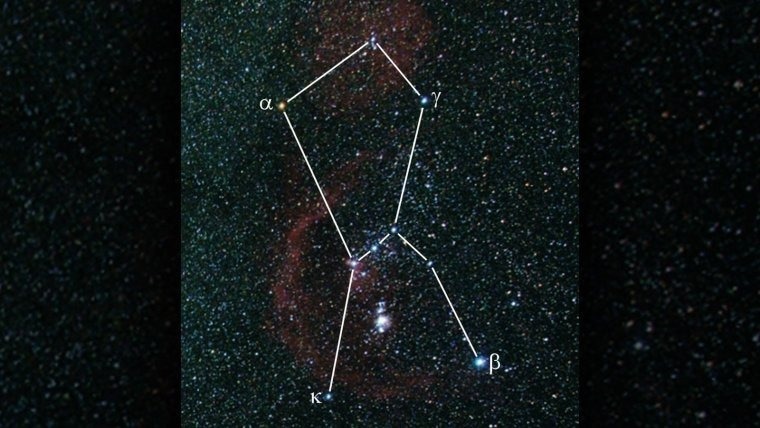Brightness, size, and color alter as nuclear fusion in a star’s core advances. These qualities provide astronomers with crucial details about a star’s age and mass. Together with collaborators from the USA and Italy, astronomers at Friedrich Schiller University in Jena, Germany, have now successfully detected and dated such a color change in a brilliant star.

The constellation Orion, Betelgeuse is marked with Alpha. Image Credit: Markus Mugrauer
Stars that are much heavier than the Sun are blue-white or red; for astronomical time scales, the change from red to yellow and orange is relatively swift.
Scientists have discovered that Betelgeuse, a bright red giant star in the top left of the constellation Orion, was yellow-orange about 2,000 years ago using a variety of historical sources. In the most recent issue of “Monthly Notices of the Royal Astronomical Society,” they disclose their findings.
Sources from Antiquity from Around the World
Around 100 BC, the Chinese court astronomer Sima Qian described the colors of stars, saying that white stars resemble Sirius, red stars Antares, yellow stars Betelgeuse, and blue stars Bellatrix.
From these specifications, one can conclude that Betelgeuse at that time was in color between the blue-white Sirius and Bellatrix and the red Antares.
Ralph Neuhäuser, Professor, University of Jena
In addition to the above, the Roman scholar Hyginus said that Betelgeuse had a color similar to that of yellow-orange Saturn some 100 years later. As a result, one may measure the former color of Betelgeuse with even greater accuracy.
More ancient writers, including Ptolemy, provide evidence that Betelgeuse, at the time of their writing, did not belong to the group of bright red stars that also included Antares (in the constellation Scorpio), Aldebaran, and others (in Taurus, the Bull).
Since ancient times, nations all across the world have described Antares as being red and compared it to Mars. The Greek term Antares means “like Mars” in color.
“From a statement by the Danish astronomer Tycho Brahe, one can conclude that, in the 16th century, Betelgeuse was redder than Aldebaran,” Neuhäuser notes. Currently, Betelgeuse is similar in brightness and color to Antares.
1.5 Million Years to Go Until Betelgeuse Explodes As a Supernova
Since about ten years ago, Jena-based astronomer Ralph Neuhäuser has included historical celestial observations in his astrophysical studies; this topic is known as “Terra-Astronomy.” Along with his wife Dagmar, he works closely with colleagues in the fields of languages, history, and natural philosophy.
“The view back in time delivers strong impulses and important results. There are quite a several astrophysical problems which can hardly be solved without historical observations,” Neuhäuser adds.
What do those ancient transmissions about Betelgeuse teach humans?
“The very fact that it changed in color within two millennia from yellow-orange to red tells us, together with theoretical calculations, that it has 14 times the mass of our Sun – and the mass is the main parameter defining the evolution of stars,” Neuhäuser explains.
“Betelgeuse is now 14 million years old and in its late evolutionary phases. In about 1.5 million years, it will finally explode as a supernova,” he says.
Journal Reference
Neuhäuser, G., et al. (2022) Color evolution of Betelgeuse and Antares over two millennia, derived from historical records, as a new constraint on mass and age. Monthly Notices of the Royal Astronomical Society. doi.org/10.1093/mnras/stac1969.